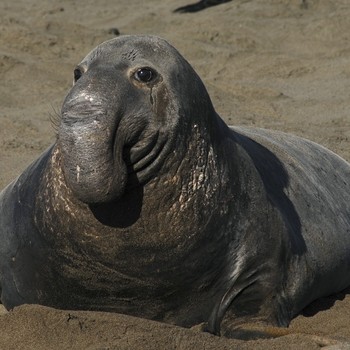First, balancing the equation:
#SO_(2(g)) + 2NaOH_((s)) -> Na_2SO_(3(s)) + H_2O_((l))#
Calculating moles of each reagent used:
#-># We first need to calculate the molar mass of each reagent since we are given the mass of each reagent, and molar mass allows us to convert from mass to moles.
#mm(SO_2): 32.07g# (molar mass of sulfur) #+2(16)# (molar mass of oxygen, 2 oxygen atoms present) #= 64.07g#
#n(SO_2) = (53.3cancel(g))/((32.07+2(16))cancel(g)mol^-1)#
#=0.8319....mol# of #SO_2#
#-># Similarly, moles of NaOH:
#n(NaOH) = (37.8cancel((g)))/((22.99+16+1.008)cancel(g)mol^-1)#
#=0.945...mol# of #NaOH#
We know from the balanced equation, that for every one mole of #SO_2# which reacts, 2 moles of #NaOH# are consumed, as the mole ratio of #SO_2# to #NaOH# is #1:2#.
Hence, if all #0.8319...# moles of #SO_2# are consumed, then #2(0.8319...) = 1.6638...# moles of #NaOH#; however, only #0.945...#mol of #NaOH# is present from our calculation above, and thus not enough #NaOH# is present to react with all the #SO_2# present, i.e. #NaOH# is a limiting reagent.
Since the reaction goes to completion, all #NaOH# present will thus be consumed (since #NaOH# is limiting so when all #NaOH# is consumed, the reaction cannot occur further), and by using the mole ratio from the balanced equation, we can find the moles of each product.
#-> Na_2SO_3 : NaOH = 1:2#
Therefore moles of #Na_2SO_3# = #1/2# moles of #NaOH# = #(0.945...)/2#
#=0.4725....mol# of #Na_2SO_3#
Mass of #Na_2SO_3#: using molar mass of #Na_2SO_3#
#0.4725...mol# x #(2(22.99)+32.07+3(16))gmol^-1#
#=59.56...g = 59.6g# (3 significant figures)
#-> H_2O : NaOH = 1:2#
Therefore similarly, moles of #H_2O# = #1/2# moles of #NaOH# = #(0.945...)/2#
#=0.4725....mol# of #H_2O#
Mass of #H_2O#:
#0.4725...mol# x #(2(1.008) + 16)gmol^-1#
#=8.513...g=8.51g# (3 significant figures)

